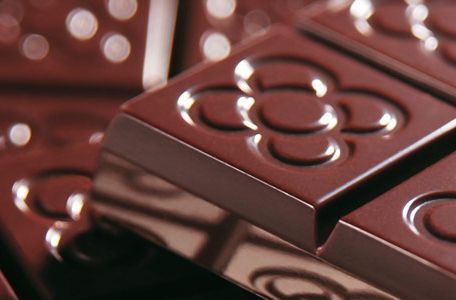
03/03/2016
NCD Beamline at ALBA Synchrotron: When X-Rays Make Chocolate Speak
NCD Beamline at ALBA Synchrotron: When X-Rays Make Chocolate Speak
Easter is around the corner and in many places chocolate is usually offered on that occasion. It gives a good opportunity to explain a recent and original use of ALBA synchrotron, namely a research on cacao cream solidification.
The way cacao cream solidifies – the way it crystallizes or the way molecules self-organize as physicists would say – is crucial. The way chosen determines not only the tactile and visual aspect that is very important by the way, but also the gustative sensation: to each of the different crystallized structure obtained corresponds a different melting temperature on the palate.
Therefore, the understanding of the crystallisation mechanisms involved allows controlling and improving the manufacturing process. With that goal in mind, chocolate maker Enric Rovira has joined forces with researcher Laura Bayés García and her colleagues from the crystallography department of the Universitat de Barcelona to investigate the so-called velvet chocolate texture that provides an original sensation of freshness on the palate.
Thanks to the NCD ALBA beamline X-rays, it has been deduced that this singular texture is due to the manufacturing process (cacao cream sprayed on a chilled solidified chocolate substrate) that produces crystals much more tiny than in the normal chocolate: this size difference leads to a 2-degree lower melting temperature of the coated velvet-structured chocolate compared to the substrate that causes the sensation of freshness.
This research work resulted in a scientific paper published in Crystal Growth and Design. This is a clear illustration of how the frontier between basic and applied sciences can be blurred: how cacao cream molecules solidify is both a pure crystallography problem and an industrial challenge.
Enjoy your chocolate!
The way cacao cream solidifies – the way it crystallizes or the way molecules self-organize as physicists would say – is crucial. The way chosen determines not only the tactile and visual aspect that is very important by the way, but also the gustative sensation: to each of the different crystallized structure obtained corresponds a different melting temperature on the palate.
Therefore, the understanding of the crystallisation mechanisms involved allows controlling and improving the manufacturing process. With that goal in mind, chocolate maker Enric Rovira has joined forces with researcher Laura Bayés García and her colleagues from the crystallography department of the Universitat de Barcelona to investigate the so-called velvet chocolate texture that provides an original sensation of freshness on the palate.
Thanks to the NCD ALBA beamline X-rays, it has been deduced that this singular texture is due to the manufacturing process (cacao cream sprayed on a chilled solidified chocolate substrate) that produces crystals much more tiny than in the normal chocolate: this size difference leads to a 2-degree lower melting temperature of the coated velvet-structured chocolate compared to the substrate that causes the sensation of freshness.
This research work resulted in a scientific paper published in Crystal Growth and Design. This is a clear illustration of how the frontier between basic and applied sciences can be blurred: how cacao cream molecules solidify is both a pure crystallography problem and an industrial challenge.
Enjoy your chocolate!
More news
14/12/2018
The Open Innovation Forum matches business challenges to academic solutions
07/12/2018
2017 BioCat report: The best of the Bioregion of Catalonia
30/11/2018
Barcelona Synchrotron Park’s Commitment to Sustainable Growth
23/11/2018
Astronomers led by IEEC reveal a cold super-Earth around Barnard’s star
16/11/2018
CRAG’s Researchers discover how to generate plants with enhanced drought resistance
08/11/2018
The Barcelona manifesto: for a city-led science and technology diplomacy









